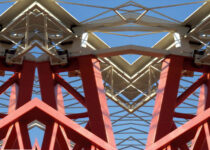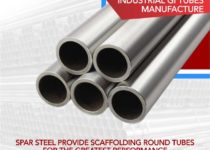WHAT IS THE DIFFERENCE BETWEEN STEEL PIPES & TUBE AND THEIR DIMENSIONS?
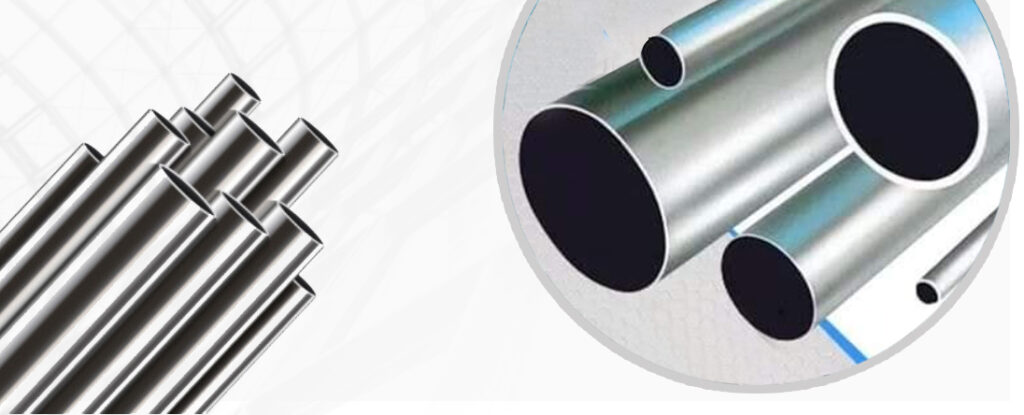
Sparsteel is a leading and trusted scaffolding company across Dubai, UAE, and Middle East countries and is known for manufacturing the latest advanced technology and a wide range of high-quality steel pipes and tubes.
such as MS ERW Pipes/Black Pipes /PG/GI Pipes/GIS Tubes/Galvanised Pipes/Galvanised Tubes/Scaffolding Pipe/Scaffolding Tubes/ARAMCO Seamless Pipes & Tubes, etc. based on international parameters. In this article, we will discuss know the difference between steel pipes and tubes.
We often use the words pipe and tube for one another and think that both are the same. But we should know are differences between pipe and tube.
STEEL PIPES
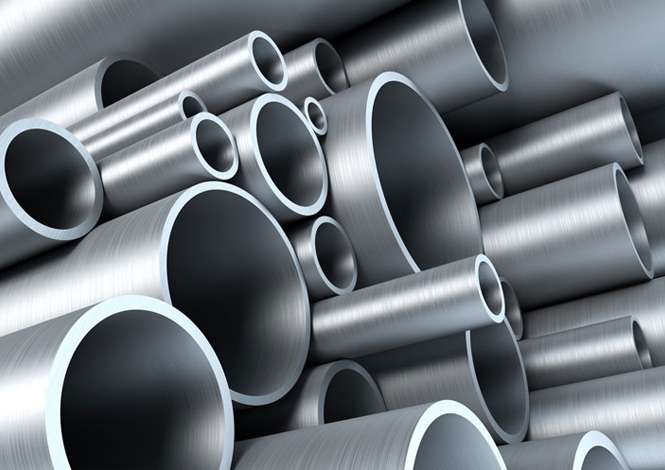
Steel Pipes are round hollow cross-sections used to distribute fluids, gases, pellets, and powders, such as oil & gas, propane, steam, acids, and water. The pipe is designated by a nominal pipe size (NPS) that represents a rough indication of the pipe conveyance capacity.
The most important dimension for a steel pipe is the inside diameter (ID), which indicates the rough (not the exact) fluid conveyance capacity of the tubular. The ID is expressed in nominal pipe size (NPS) in inch or diameter nominal (DN) i.e. bore size (BS) in millimeters.
The pipe’s outside diameter (OD) does not match the nominal pipe size (NPS) below NPS 14 inches (a 2 inches pipe, for instance, has an internal flow capacity (ID) of approximately 2 inches, but has an outside diameter of 2.375 inches).
For pipes of a given NPS, the pipe outside diameter is fixed, whereas the pipe inside diameter decreases by increasing schedule values (pipe wall thickness i.e. WT).
Note: The most important mechanical parameters for pipes are the pressure rating, the yield strength, and the ductility.
The standard combinations of pipe nominal diameter and wall thickness (schedule) are covered by the ASME* B36.10 and ASME B36.19 specifications (carbon & alloy pipes, and stainless steel pipes respectively).
ASME*—American Society of Mechanical Engineers
Pipe Inside Diameter (ID) Calculator
The pipe ID can be calculated by deducting from the pipe NPS the pipe wall thickness (WT) multiplied by 2 (the pipe WT can be taken from the schedule).
| Pipe ID = NPS – 2 x WT |
For example: for a 12 NPS pipe (DN 300 mm), schedule 40, the pipe outside diameter and the wall thickness are 12.75 inches (324 mm) and 0.406 inches (10.4 mm). Then Pipe ID calculation in inches and millimeters will be
1. Pipe ID in inch (”) = NPS – 2 x WT i.e. 12.75” – 2 x 0. 406”
= 12.75” – 0.812 = 11.94”
2. Pipe ID in millimeter (mm) = NPS – 2 x WT i.e. 324 – 2 x 10.4
= 324 – 20.4 = 303.2 mm
However, this calculation is just theoretical, as pipes have a wall thickness tolerance that is generally +/-12.5% for American Society of Mechanical Engineers (ASME) pipes. Hence the actual ID of a given pipe may differ by +/- 12.5% from the theoretical value.

TUBE
Whereas, Steel Tube is a round, rectangular, squared, or oval hollow section used for pressure equipment, mechanical applications, and for instrumentation systems.
Steel tube often incorporates different alloys such as aluminum, manganese, titanium, and tungsten. Steel tubes can be Electric Resistant Welded (ERW) or seamless. Seamless tubes
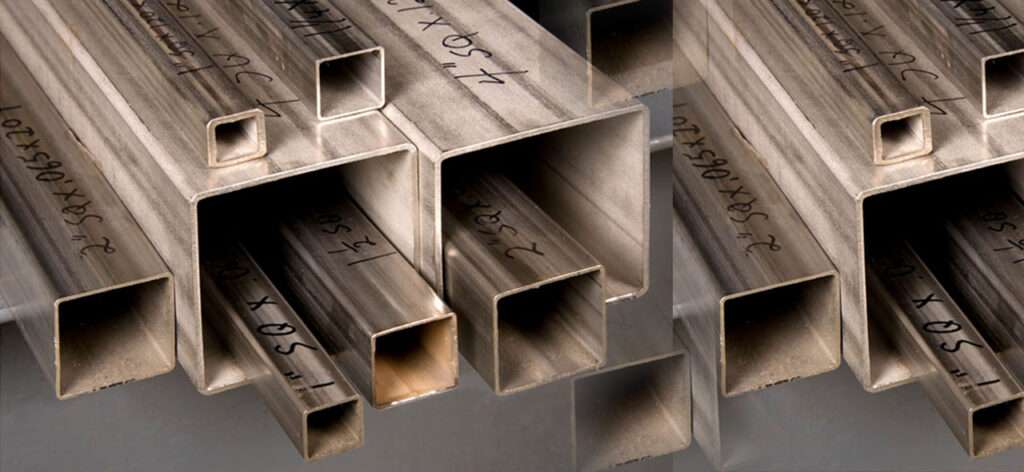
are made by passing the molten steel over a piercing rod to create a hollow tube.
Steel tubes or pipes are produced by two distinct methods which result in either a welded or seamless pipe. In both methods, raw steel is first cast into a molten workable starting form. It is then made into a tube or pipe by stretching the steel into a seamless tube or forcing the edges together and sealing them with a weld.
Due to a variety of factors, tubes are inherently stronger than pipes. This means that steel tubes perform better overall in applications that require durability and strength.
Tubes are designated by their outside diameter (OD) and wall thickness (WT), which are exact measures in inches or millimeters. For tubes, the difference between the outside diameter and the wall thickness, multiplied by two, defines the inside diameter (ID) of the tube.
| ID of Tube = OD – 2 x WT |
Differences between Steel Pipes and Tube
Differences between Steel Pipe and Tube |
||
Parameters |
Steel Pipe |
Steel Tube |
Dimensions |
The dimensions for a pipe is the outer diameter (OD) together with the wall thickness (WT) decide inside diameter (ID) of a pipe. |
The dimensions for a steel tube are the outside diameter (OD) and the wall thickness (WT). |
Pipe Wall Thickness |
The wall thickness of a steel pipe is denoted with a " schedule1" value (the most common are Sch. 40). Two pipes of different NPS2and same schedule have different wall thicknesses in inches or millimeters. |
The wall thickness of a steel tube is expressed in inches or |
Types (Shapes) |
Round only |
Round, rectangular, square, oval |
Production range |
Extensive (up to 80 inches and above) |
A narrower range for tubing (up to 5 inches), larger for steel |
Tolerances and strength |
Tolerances are set, but rather loose. Strength is not the major concern. |
Steel tubes are produced to very strict tolerances. Tubes undergo several dimensional quality checks i.e. straightness, roundness, wall thickness, surface, during the |
Production Process |
Pipes are generally made to stock with highly automated and efficient processes, i.e. pipe mills produce on a continuous basis and feed distributors stock around the world. |
Tubes manufacturing is more lengthy and labor intensive. |
Delivery time |
Can be shorter |
Generally longer |
Market price |
Relatively lower price per ton than steel tubes |
Higher due to lower mills productivity per hour, and due to |
Materials |
A wide range of materials is available |
Tubing is available in carbon steel, low alloy, stainless steel, |
End Connections |
The most common are beveled, plain and screwed ends |
Threaded and grooved ends are available for quicker connections on site |
WHAT IS PIPE SCHEDULE1?
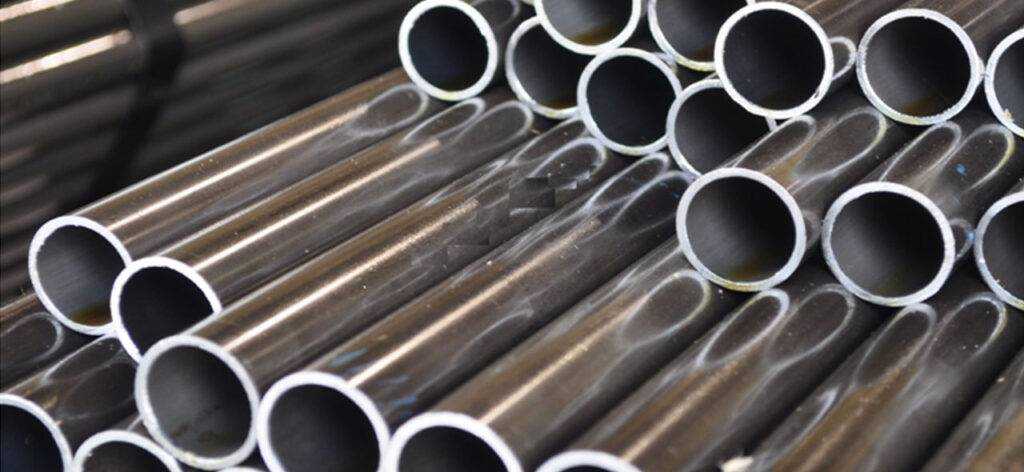
Pipe Schedule is the term used to describe the wall thickness (WT) of a pipe. The outside diameter of a pipe is the same for all Schedules in particular nominal pipe diameter.
Standard pipe schedules or schedule numbers or pipe sizes as given by ANSI / ASME B36.10M and API 5L are 11 schedule numbers — 5, 10, 20, 30, 40, 60, 80, 100, 120, 140, & 160.
The most famous pipe schedule is 40. For pipes, 8-inches and under, Schedule 40 and Standard Weight pipe wall thicknesses are the same. Schedules 5, 60, 100, 120, & 140 are rarely used. This should be considered when piping is specified for a particular project.
Schedule Number = 1,000 x(P/S)
Where,
P = the internal working pressure, psig
S = the allowable stress (psi) for the material of construction at the conditions of use.
For example, the scheduled number of ordinary steel pipes having allowable stress of 10,000 psi for use at a working pressure of 350 PSIG would be:
Schedule Number = 1,000 x (350/10,000) = 35 (approx. 40)
Which is better steel pipes schedule 40 or 80?
Schedule 40 pipe has thinner walls, so it is best for applications involving relatively low water pressure. Schedule 80 pipe has thicker walls and is able to withstand higher PSI (pounds per square inch). That means with an increase in service pressure schedule number will increase its pipe wall thickness designator.
What is Nominal Pipe Size (NPS2)?
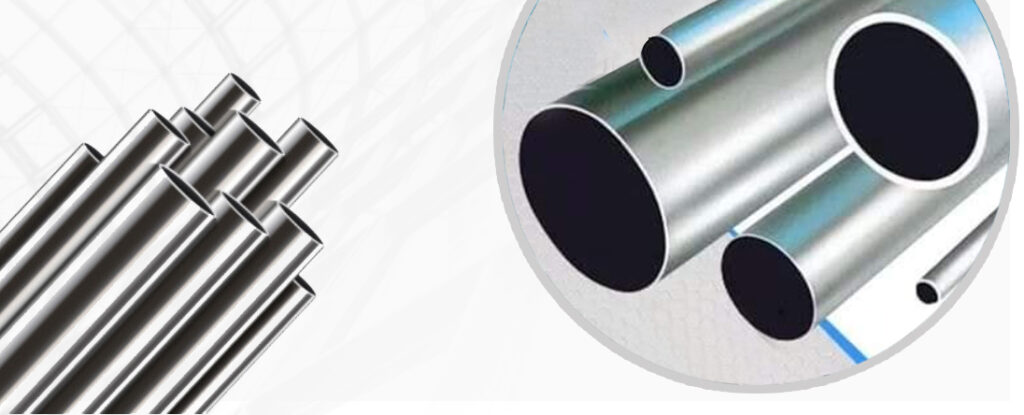
Nominal Pipe Size is a North American set of standard sizes for pipes used for high or low pressures and temperatures. “Nominal” refers to pipe in non-specific terms and identifies the diameter of the hole with a non-dimensional number.
What is Diameter Nominal (DN)?
Diameter Nominal (DN) is an International designation (SI or Matric Designator) and also a European equivalent of NPS to show pipe sizes. It refers to the internal diameter (ID) of a pipe generally mentioned in millimeters. NPS can be converted into DN by multiplying it by 25. For example, a 2” NPS pipe is simply mentioned as DN 50 mm.
What is Nominal Bore (NB) Pipe?
The nominal bore (NB)is the hollow section of the pipe. NB (nominal bore) is the European designation equivalent to NPS in DN i.e. mm value. As there is no difference between NB and NPS. NB is also an American way to refer to pipe dimensions.
It is seen that when pipe dimensions are shown in mm (DN) people refer to pipe sizes in NB. So, when someone says 25nb pipe or 50nb pipe basically they are talking about DN. For example, a 100nb pipe works out to be exactly 4.5 inches = 4.5 inches x 25.4 mm = 114.3 mm.
Spar Steel is supported by its qualified and experienced R&D team having the expertise in the application of the advanced technology of the construction field used in the USA, European Union, Japan, Australia, etc. for scaffoldings production to ensure the scaffolding standard quality of SGS, JIS, ASTM, BS, and others.
Spar Steel standard quality product materials and scaffolding services which meet OSHA, ARAMCO, Adnoc, Enoc, UAE, and SABIC specifications, and testing are:
A. Spar Steel Scaffolding Products
- Pipes & Tubes: HR (Black), Galvanized (Hot-Dip), or Pre-galvanized types of Round Tubes, Square Tubes, Rectangular Tubes, ERW pipe…
- Cuplock Systems: Vertical Standard (Open End), Ledger (Horizontal), Intermediate
Transom (Horizontal)
- Ringlock Systems: Ledgers, Braces, Hop-Up Bracket, Base Collar…
- Tube And Fittings: Galvanised Iron Scaffolding Tubes, Double Couplers, Swivel Couplers, Putlog Couplers, Grider-Coupler, Board Retaining Clamps, Toe Board Couplers, Sleeve Couplers, Ladder Clamps, Rocking Or Swivel Base Plate, Adjustable U Head Jack, Scaffolding Ladder Beams, Scaffolding Ladders, Heavy Duty Self-Closing Scaffolding Gate, Scaffolding Base Plate, Adjustable Base Jack…
- Scaffolding Steel Boards/Plank: Lvl Wooden Scaffold Board, Steel Boards without
Hooks, Steel Boards with Hooks…
- Ladder & Lattice Beams: Scaffolding Ladder Beams, Scaffolding Ladders, Lattice
Beams…
B. Spar Steel Scaffolding Services
- Contract Scaffolding Services: Construction and plant maintenance in the Oil & Gas and Petrochemical sector
- Hire and Sales: With the i-Hire Inventory Management System and control the movement of the equipment throughout the different branches and client Projects around KSA.
- Scaffolding Design & Inspection: conforming to various standards viz. British, European, American, Australian, Saudi Aramco, and other Middle East client/project specifications.
- Coil Slitting Services
- Tube Conversion Services
- Manpower/Training Supply:
- Manpower— On a short-term and long-term basis for their requirements during Turn around, shutdowns, operation, maintenance, construction, and contracting, etc.
- Training— Basic Awareness, Intermediate, & Advanced Scaffolding Training…
Support Services
- Design – Specialized Access Scaffold.
- Design – Formwork & Falsework
- House Scaffolding Training
- Health and Safety Training
Moreover, by keeping the safety and security of scaffolds structure and workers, scaffolding customers should not compromise on the kinds and quality of scaffolding products and services used in scaffolding works.
Locations for Spar Group Scaffolding Products & Services [H1]
For Spar Steel quality scaffolding products and services based on OSHA, Saudi Aramco, and Adnoc, Enoc, UAE safety standards and rules, clients can contact the following addresses given below:
1. RAK – UAE
SPAR STEEL INDUSTRIES LLC
PO Box 37374, Plot No. P111,
Al Ghail Industrial Park,
Ras Al Khaimah, UAE
Tel: +971 7258 9988
Fax: +971 7228 1737
Email: info@sparsteel.com
Website: www.sparsteel.com
2. DUBAI – UAE
SPAR TRADING LLC
PO Box 15188,
815 F – Ibn Battuta Gate Offices,
Sheikh Zayed Road, Dubai,
United Arab Emirates
Tel: +971 549 985054
Tel:: +971 455 78125
Email: uae@sparindustries.com
3. JUBAIL- KSA (H O)
ARABIAN SPAR CO. LTD
King Abdullah Road, After Flyover, Behind KPS 33
Post Box -1396, Al- Jubail – 31951,
Kingdom of Saudi Arabia
Tel : +966 (13) 3619096, +966 (13) 3627320
Fax: 966 (13) 3618032
Email: info@arabianspar.com
4. RIYADH KSA
ARABIAN SPAR CO. LTD
PO Box 4424, Ring Road, Exit-22,
Faryan Street, Riyadh-14515
Saudi Arabia
Mobile: +966
533762893
Tel: +966 11 2044947
Fax: +966 11 2044947
email: info@arabianspar.com
5. FACTORY
SPAR SCAFFOLDING FACTORY
Near Riyadh and Saudi
Fransi Bank Behind KPS 33
Al Jubail KSA
Tel : +966 (0)13-3627320
6. UK
SPAR SCAFFOLDING LTD.
Suite No. 2, Frendown, Wooderford Road,
London England, E18 2 ED
Tel: +971
7258 9988


